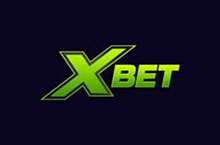Those of you who are relatively new to sports betting are probably puzzled by the sheer number of bet types, you’ve come across. And indeed, the vast range of bets, one can place on sports events is truly staggering and may be rather confusing to inexperienced punters. Such confusion may result in mistakes, which will eventually lead to major losses. It is not surprising all successful punters, professional or recreational, are well grounded in bet types. That is why it is always a good idea to learn the basic types before you proceed with more advanced wagers.
The truth of the matter is bet types are not that complex and difficult to understand as long as one starts from the basics. But some bet types are indeed more difficult to grasp than others. However, this doesn’t mean beginners will fail to understand them altogether. Inexperienced punters are recommended to start with more simple wagers; you can proceed with placing more complex bets as soon as you’ve mastered the basic types. Another thing to take into consideration is the fact bet types’ names can vary from one country to another. In some instances, the same term may have different meanings.
In the following article, we have arranged the bet types starting from the simple ones and then proceeding with more complex wagers.
Find the best bookmakers here
Straight Bets and the Point Spread
The straight bet is without question one of the most common types of wagers and is widely considered to be suitable for inexperienced punters. Those of you who don’t like to take chances by placing risky bets should go for straight bets. Generally speaking, a straight bet is when you select one outcome only and choose between two participants in a game. Those of you who have predicted the outcome of a game correctly, will win. Those who failed, will lose.
Straight bets closely resemble win bets but there are some differences after all. With win bets, the aim is to guess who will win a particular game. In the United States, the win bet is referred to as the “Moneyline”. On the other hand, with straight bets, you’re allowed to pick between several outcomes, you’re not required to bet only on who you think the winner will be. For instance, games may result in a draw, as well.
When there is a significant difference between the two teams involved in a game and the so called Point Spread is created to neutralize this difference. Basically, the idea is to artificially boost the underdog’s chances of winning in advance, so that both teams appear to be equally appealing in punters’ eyes.
As you can imagine often one of the teams is better than the other, which may result in all punters placing their wagers on the team that is more likely to win the game. This, by itself, will lead to a substantial number of winning wagers. That’s the chief reason why bookmakers create the point spread – the idea is to give an advantage of the potential losers in advance to make both teams appear equally appealing. Punters can bet on the favourite to win by the size of the spread. The other option is backing the underdog and if the team loses, you will lose by no more than the size of the spread again.
Here is an example with basketball teams to make things clearer. The Chicago Bulls and the Milwaukee Bucks are about to meet for a clash. Many punters will pick the Bulls as the potential winners. As the Bulls are the favourites in this case, the bookmakers will adjust the point spread at 7 (hypothetically, of course). This means that those of you, who make a straight bet on the Bulls will need the team to win with more than 7 points in order to generate any profits. On the other hand, punters who have placed a straight bet on the potential losers, the Bucks, will generate profits if the team wins or loses with less than 7 points. What happens if the favourites win with 7 points? Well, this is called “a push” and in such cases all punters, who have placed bets on the Bulls will receive their stakes back.
In most cases, straight bets’ odds are the same, regardless of which team you decide to bet on.
Over/Under Totals
This is yet another type of bet, which enjoys great popularity among punters in recent years. Over/Under bets are typically placed on football and basketball games but are common to other sports, as well. The good news is they, too, are not that difficult to understand. With over/under bets, it all depends on how many points or goals the teams will score. It’s completely irrelevant who the winner is. The only thing that matters, in this case, is the overall number of points/goals scored.
The bookmaker decides in advance on the number of points or goals to be scored in the course of a game. Punters, on the other hand, are supposed to predict whether the number of points scored will be higher or lower than the one, set by the bookmaker. Allow us to demonstrate with another example. In a hypothetical situation, Arsenal is playing against Chelsea. The bookmaker has set the number of goals to be scored by Arsenal to 3. You can bet on Arsenal scoring more than 3 times or place a wager on the team netting less than 3 goals.
Futures
This type of bet is also easy to grasp as it is based on the same principle as win bets. To avoid confusion, please note in some cases futures go by the name “outrights”. The main idea is to try and guess who the winner of an important competition, tournament or league will be.
Placing a future bet can be lots of fun but unfortunately, comes with a number of disadvantages. The tricky part is you’re supposed to make your prediction before the season has even started. From this, it follows that you’ll hardly have any basis to make your prediction on as the season is yet to begin. There’s no way for you to know how each team will perform. Of course, you might base your prediction on the team’s performance and form during the previous season, but then again, this is not always indicative. Some key players may be benched, others may be transferred or suffer injuries. The bottom line is one never knows what will happen in the course of a sports season. This explains why futures pose such a risk.
Yet another disadvantage of future bets stems from the fact punters are expected to place their bets in advance, before the season’s start. This ultimately means your money will sit with the bookmaker all season long before you can collect the winnings you’ve accrued.
It is advisable to place smaller bets on futures. If the team you’ve bet on fails to win the championship, you won’t experience massive losses. Then again, if your favourite wins, your small bet may generate substantial profits, depending on the odds, of course. Either way, it is recommended to play it safe.
In-Play Betting
In-Play betting is the way to go for those of you with limited experience. Some bookmakers call it “Live Betting” or “In-Running”. But first, let’s explain what In-Play betting is. In many cases, bookmakers accept bets only before the game has started. However, many web-based betting providers tend to accept bets on different markets after the event’s beginning. In-Play bets are accepted from the beginning till the very end of a game.
Certain things need to be taken into consideration. With In-Play betting, the odds change as the game or race progresses. Besides, a game in progress allows for betting on additional markets. For instance, you can place a bet on which team or player will net the next goal. In tennis, it is possible to bet on who you think will win the next set and so on.
These were just a few examples but as you can probably discern, In-Play betting comes with a number of advantages. For one, it is much easier to make a correct prediction when you watch as the game unfolds. A game in play allows for better assessment of its possible outcome. Keep in mind, decisions need to be made very quickly. In-Play betting also enables punters to cut down on their losses. For example, you’ve placed an In-Play bet on a football team which has started off the half-time poorly. If you regret your decision, you may simply place another bet on the opponents in an attempt to offset the possible losses from your first wager.
Those of you, who have an account with a web-based bookmaker can watch games in progress online, because many betting providers offer a Live Stream service. As established bookmakers are typically available in a mobile format, too, you’ll never miss anything even when you’re not at home in front of the TV.
Propositions
Proposition bets, also called “Props”, are extremely popular among punters. This type of bet allows for wagers to be placed on different sports events, teams or players statistics. The most common types of proposition bets include betting on which team or player will score the first goal of the game. In American football, for instance, you can bet on the team you believe will score the first touchdown or the first field goal. Then again, baseball fans may choose to bet on how many hits or runs a specific player will accumulate in the course of a single game. Bets can be placed on how many strikes a baseball pitcher will score. Placing Over/Under bets on statistics is yet another alternative. As you can see, the list of options for props is practically endless.
In broader terms, proposition bets are wagers placed on things which generally do not affect the overall outcome of a sports event. To avoid confusion, please note some bookmakers use the term “Specials” in regard to proposition bets.
Parlays
It is generally assumed inexperienced punters should avoid this type of bets and there’s a good reason why. The parlay, also known as “a Combo Bet” or “Accumulator” is a single bet which links two, three and sometimes even more individual wagers. Or in other words, parlays consist of several selections. Instead of placing several single bets, you can combine them in one parlay with multiple selections. Parlays with two selections are called “Doubles”, while those, linking three single bets go by the name “Trebles”. Sometimes the number of selections reaches up to 12. This type of bet is quite common in sports like European football and horse racing.
So why should parlays be avoided by beginners? The answer is simple – beginners lack the experience and knowledge to make several correct predictions. A successful parlay consists of winning selections only. All of your predictions should be correct, if you wish your wager to pay out.
Parlays, however, are especially popular among seasoned punters for the simple reason they might generate massive profits with several smaller bets. The greater the number of selections a parlay consists of, the bigger the profits you will generate (provided that all selections are winning ones, of course). Your potential returns increase because if all selections come out winning, their odds will be multiplied. The result is a substantial profit.
Teasers
This type of bet is very popular among football and basketball fans. To a great extent, teasers resemble parlays. There is a small difference, though – punters are allowed to buy and adjust the point spread for the selections, they have made. Much like parlays, teasers can consist of two to twelve selections, on rare occasions even more.
As we’ve mentioned before, punters can add points to the point spread. If all teams cover their respective point spreads, your teaser will win. Otherwise, you will lose the entire wager. In most cases, bookmakers allow point spreads to be changed by 6, 6.5 or 7 points.
The major difference between parlays and teasers results from the fact there is a significant difference as far as odds are concerned. If your parlay’s selections are all correct, their odds will be multiplied, which is not the case with teasers. With every 0.5 point you adjust your point spread with, the odds go down. But it’s important to note that punters’ chances of winning teaser bets are much higher. While a teaser’s odds are not as appealing, you will collect smaller returns more often – a fact which leads to the conclusion, your chances of losing your entire bankroll are much lower.
Handicaps
Certain parallels can be drawn between point spreads and handicaps, and rightfully so. Handicap bets are commonly placed on sports, which are based on collecting points – soccer, American football, tennis, basketball and so on. With handicaps, too, an advantage is given in advance to one of the two competing teams.
As it has probably occurred to you already, the team which is more likely to lose the game is given a “head start”. A certain number, called the handicap, is subtracted from the number of goals the winner has scored. But providing underdogs with a head start is not the handicaps’ primal purpose. Handicaps affect the way the odds are presented, which has to do with the bookmakers running their “balanced books”. On the other hand, handicaps’ purpose is to make one-sided sports events more exciting.
Allow us to demonstrate this with an example. If Manchester United face Aston Villa, everyone will expect Manchester to win, especially if you consider the fact, Aston Villa are currently positioned at the very bottom of the standings table. That’s why the bookmaker can opt to give Manchester a -3 handicap. This means Manchester are supposed to score a minimum of four goals – only then, punters who have placed wagers on this team will generate a return from this market (provided that Aston fail to net even a single goal). If the same game ends in 4:1 for Manchester, it will be interpreted as a draw, because as you subtract 3 from 4, the result is practically 1:1. Then again, if Manchester score only two goals, and the result is 2:1, those, who have placed bets on Aston will win and collect their profits. In this case, Aston will have a handicap of +3. So as you can see, betting on the underdog can pay in some cases.
Asian Handicaps
This is a variation of the handicap bet, based on the same principle. The team which has greater chances of winning the game is handicapped, and must score more goals so that punters betting on them can win. There are some differences, though, the main one being the draw result is completely eliminated. A game ending in a tie will result in a push – in such cases, punters typically get their bets back. To eliminate the possibility of a push, odds are expressed as fractions. This can be done in both the decimal and the fractional formats. Matches are handicapped in the following way: -/+ ½ (0.5) or -/+ ¼ (0.25), since it is virtually impossible for any team to score a half or a quarter of a goal. Other possible handicaps include -/+ ¾ (0.75), -/+ 1 ½ (1.50) and so on.
A quarter handicap splits the bet you’ve placed, between the closest two half (½) intervals. Your stake is divided into two parts and is placed as two individual bets. For instance, if you place $1000 as a bet and the handicap is 1 ¾, it would be the same as placing a $500 bet at 1 ½ handicap and another $500 at 2.
On the other hand, a quarter handicap of ¼ allows punters to either win and tie, or lose and tie. In the first case the punter will win half of their wager, in the second they lose half of the amount they’ve placed as a bet.
When the handicap consists of a whole number, -/+ 1 for example, the final score will be modified in such a way, so that the game’s result is a draw. In reality the game did not end in a draw, the result is simply adjusted so that it only appears to be so. This situation calls for a push – as there is no winner, you will have your stake returned. In other words, you neither win, nor lose.




 Premier League
Premier League La Liga
La Liga Bundesliga
Bundesliga Serie A
Serie A Ligue 1
Ligue 1 UCL
UCL



